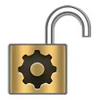Share peer-to-peer files for free with this app for mobile devices
Share peer-to-peer files for free with this app for mobile devices
Pros
- Very simple UI
- Unlimited number of file transfers
- Previews files quickly
- Moves bigger documents & videos between devices
Cons
- User group limitations
- Only as fast as the network its connected to
- Requires Zapya app to be installed at all endpoints
Zapya is a very simple file-sharing tool that takes all of the guesswork out of exchanging files between different devices. While the software was originally designed for use with smartphones, Zapya has been ported to the Microsoft Windows platform. Creative users can take advantage of this cross-platform design to trade files between their phone and their PC.
While Zapya is technically a peer-to-peer sharing app, it works much differently from other P2P programs. Instead of focusing on trading files with users all over the world, Zapya only works with devices connected to the same network perimeter. That means it doesn't suffer from many of the security problems that you'd expect to experience when working with a more broad-reaching file-sharing program.
That being said, it still gives you the freedom to share any kind of file. You're free to share multimedia files, documents and pretty much anything else as long as what you want to exchange is contained within a discrete object. If you want to share multiple items, then you can deflate them into a zip file because Zapya supports compressed folders.
Users might sometimes run into issues trying to e-mail compressed documents because certain clients have blanked out support for any and all archives. While this is ostensibly done for security reasons, it can be rather annoying if you're trying to email files to yourself. Those who run into this kind of issue can turn to Zapya whenever it happens to quickly exchange an archive without any further problems.
In theory, you could use Zapya to transfer files over Bluetooth. Due to the nature of Bluetooth networking, you'll probably have a much better time working with Wi-Fi. In either case, though, you'll get your files to where they're going irrespective of transfer speed.
Despite all of the various advances in computer applications, transferring files between different operating systems is still remarkably difficult. It's hard to find one single file format that allows you to trade large HD video files and tarballs between the Windows and Macintosh platforms. PC users can install the PC version of the Zapya app and then connect it to their Macintosh with ease. That should free them to transfer whatever objects they want to without having to worry about lack of Windows support for HFS+ or APFS.
Perhaps the best feature is the fact that Zapya offers an extremely clean interface that shouldn't get in anyone's ways. Users can share, receive and preview files with just a few clicks. Naturally, it also supports a few basic keyboard shortcuts. Any hotkeys that are built into the underlying Windows' interface work just fine, which should be great news for serious IT professionals that want to deploy Zapya in a mission critical environment.
That being said, it's not designed as mission critical software. In fact, it's easy enough for almost anyone to use regardless of their hardware specifications or any other limiting factors that they might be concerned about.
While it's a slight annoyance that you have to install the Zapya app on all endpoints that you hope to interface together, there's really no other way the developers could have done this securely. As soon as you've finished with the installation, you're free to join a hotspot group and connect your devices together. In most cases, you'll want to create a special one for your family or friends to use. Some gamers have created small local hotspot lobbies that they can use to exchange saved games and other data with everyone around them. That makes it all the easier to work together to create at least a somewhat unified gaming environment for themselves.
After the receiver and transmitter have been assigned to a single group, they'll be free to begin exchanging files with one another. Once a person has been approved to join a group, they'll b free to share the other users' connection until they're removed.
Heavy mobile device users might want to take advantage of this fact to exchange photos and music. They can even rely on it to sync their podcasts, especially if they often find themselves downloading huge archives of podcast episodes onto their PCs and they'd prefer to listen to listen to them while they're on the road.
Unlike the default OS tools that Zapya replaces, it doesn't require any sort of authentication to get working. Once you've installed it, you're granted access to QR codes. These can be scanned on both devices to allow them to connect together easily. That's much simpler than trying to manually enter a great deal of PPP tunneling information to get multiple devices to network together.
Those who do need to connect devices in a different way shouldn't find that to be too challenging either, so you won't run into many problems during this step. That will probably come as a relief to anyone who has connected devices of different eras together and run into a mess of issues while doing so. Since it uses its own networking system, Zapya almost completely bypasses all of these potential hiccups. If you do run into any issues, then they're usually corrected simply by restarting the app or changing a few extremely basic configuration options.
On the other hand, Zapya is never going to be as fast as working with actual media. If you can connect two devices together via a cable, then this is generally going to be your best bet. File transfer protocols based on hardwired connections can be difficult to work with, however, and Zapya will more than likely stand as a real alternative for anyone who wants to reliably transfer data without having to worry about these various conditions.
Those who can't transfer files between devices due to protocol mismatches will find that Zapya helps them alleviate these problems, which should more than make up for any problems related to speed.
Pros
- Very simple UI
- Unlimited number of file transfers
- Previews files quickly
- Moves bigger documents & videos between devices
Cons
- User group limitations
- Only as fast as the network its connected to
- Requires Zapya app to be installed at all endpoints




